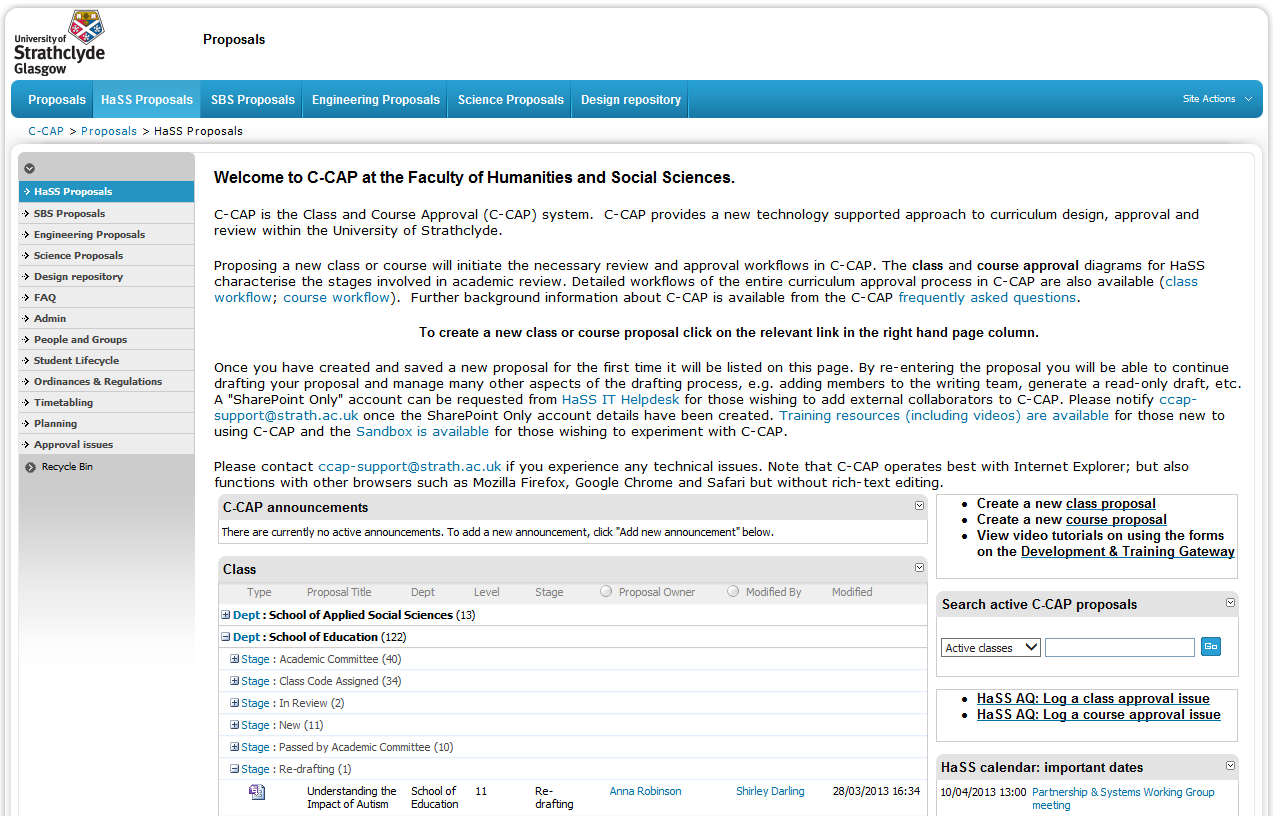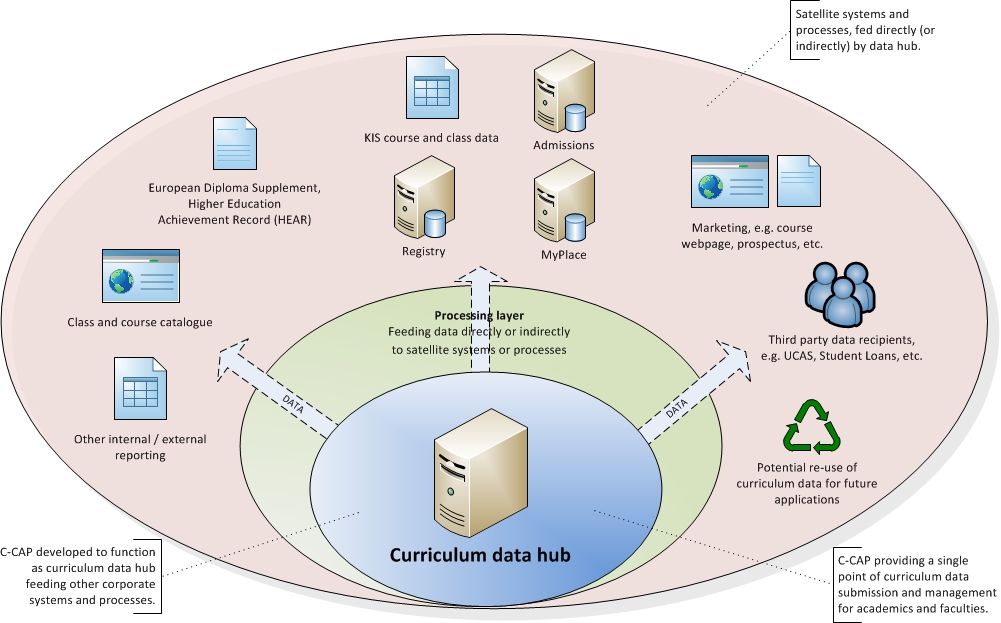It has been a few months since we posted a PiP Project update on the Blog. We must apologise for the lack of communication but we have been extremely busy engaging in some intensive embedding activity, the strategy of which is discussed here in a previous post. I therefore thought it would be worthwhile reporting some of the headline statistics that have emerged from our efforts since the beginning of 2013.
All four University of Strathclyde faculties are now using C-CAP to design and approve new curricula. This is tremendous progress. As might be expected, some faculties are further along the path to the embedding of tech-supported curriculum design than others. Within two faculties C-CAP has become truly embedded; here C-CAP is the default curriculum design tool and its use is mandated. The other two faculties are in the middle of a transitional change period in which a hybrid curriculum design and approval scenario exists; although I am pleased to report that one of these faculties is very close – perhaps within a month or so - to joining the embedded club!

Figure 1: HaSS Faculty area of C-CAP, showing the launch screen and the statuses of active class designs.
What about curriculum design numbers? Activity on C-CAP has grown phenomenally since January 2013 and it is therefore likely that - as I am writing this - a new curriculum design has been proposed using the system, such is the current level of activity (see Figure 1 above). Using the accepted curriculum design parlance of "modules" and "programmes" (rather than classes and courses), we can report that:
- 217 modules have been designed, proposed and reviewed using C-CAP. Of these, 42% have been officially approved and are active on registry systems and are populating our C-CAP "design repository". The remainder are currently concluding their journey through the approval process and are likely to be active by the end of May 2013.
- 13 degree programmes have been designed, proposed and reviewed using C-CAP. Of these, 8 have been officially approved, are active and, in some cases, are recruiting students or are being delivered to students as I type!
- 129 members of staff across all four faculties have so far received training on the C-CAP system, via induction sessions and/or targeted one-to-one training. This figure does not include similar training provided for core stakeholder groups within Professional Services, such as those within the Student Experience & Enhancement Services (SEES) Directorate, like Student Lifecycle or Ordinance & Regulations, or within the Strategy and Policy Directorate.
Meanwhile we have been working closely with colleagues of the Viewpoints Project (our cluster colleagues) at the University of Ulster, assisting them in the development of a system similar to C-CAP. They are especially interested in the approach used by PiP and, in particular, the incremental approach adopted. This has entailed numerous site visits in Glasgow and to Coleriane, as well as countless conference calls. Fortunately Ulster is spared some of the difficulties PiP faced in mapping business processes. Ulster already have their curriculum procedures, policies and processes rigorously and impressively documented and also benefit from not having a devolved organisational structure, something that complicated process mapping at Strathclyde. It is nevertheless interesting to observe the same issues, barriers and concerns being expressed by academics at the University of Ulster which, in many cases, provides further validation of PiP's findings, as documented in the evaluation outputs and Institutional Story. The embedding work has also been exploring a more holistic approach to the management of curriculum data. In essence, taking system interoperability to the next level and rendering C-CAP as a bona fide institutional curriculum data hub, feeding all dependent systems and processes, as diagrammed below (Figure 2).
There is more to report but I will leave it for another time. Watch this space!

Figure 2: Moving further towards a holistic curriculum data management approach, using C-CAP as a data hub.